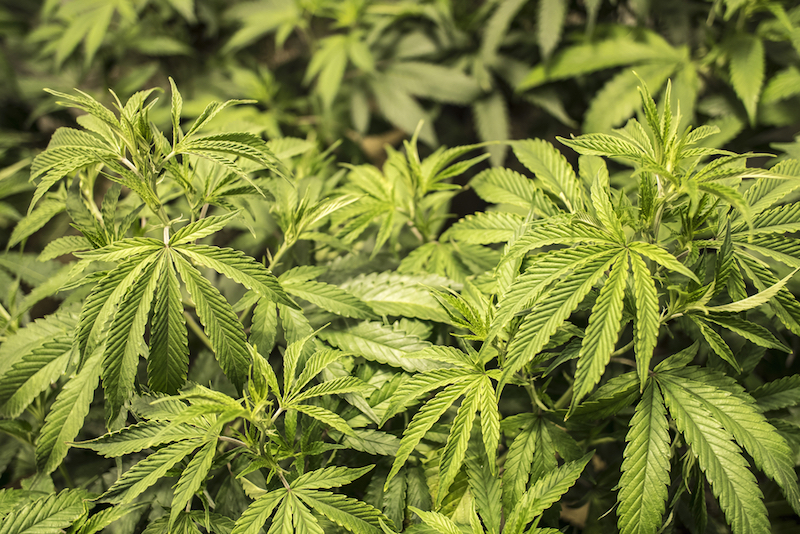Safer Weed? Experts Call for Research to Reduce Marijuana's Harms

As marijuana use becomes increasingly legal, researchers need to explore new ways to make the drug safer for people to use, experts argue in a new paper. The potential harms of using marijuana include memory problems, impaired coordination, addiction, paranoia and withdrawal symptoms.
In the paper, authors in the United Kingdom discussed several potential options for making marijuana safer. For example, it may be possible to offset some of the harms of the drug by tinkering with the doses of two major chemical compounds in marijuana: tetrahydrocannabinol (THC) and cannabidiol (CBD).
"Although most users will not develop problems from their cannabis use, it is vital … that we explore alternative and innovative ways by which we can reduce and mitigate cannabis-related harms," study author Amir Englund, a research associate who studies addictions and the effects of cannabis at King's College London, said in a statement.
"With the rapidly changing political climate around cannabis, the demand to effectively reduce cannabis-related harms has never been greater, and more research is urgently needed to inform policy decisions," added Englund. [25 Odd Facts About Marijuana]
In recent years, eight U.S. states have legalized recreational use of marijuana, including California, Oregon, Alaska, Maine, Massachusetts, Washington, Nevada and Colorado. Even more states, however, have legalized marijuana for medical use, although the drug remains illegal under federal law.
Other countries have loosened their marijuana laws as well: Uruguay legalized the sale of marijuana in 2013, and Canada is set to legalize recreational marijuana use in 2017. In addition, several European countries, including Portugal, Spain and the Netherlands, have lessened or abolished sanctions on possession of the drug, the authors said.
It's not clear exactly how marijuana legalization will affect people's use of the drug, but the legal changes are unlikely to reduce the number of people using marijuana, the authors wrote in their paper, published March 1 in the journal The Lancet Psychiatry. Thus, the time has come to consider how to reduce harm from marijuana, they said.
Sign up for the Live Science daily newsletter now
Get the world’s most fascinating discoveries delivered straight to your inbox.
Several studies suggest that higher concentrations of CBD in marijuana may protect against the harmful effects of the drug, the authors said. This may be because CBD offsets some of the negative effects of THC, the researchers said.
However, the dose of CBD that's needed to counteract the negative effects of THC is not known, the authors said. So future studies are needed to examine marijuana products that have various ratios of THC to CBD and how these products affect cognition, psychotic symptoms and the development of addiction, the researchers said.
Another option for making marijuana safer is to regulate the potency of the drug, the new paper said. For example, some countries have suggested capping the THC content of marijuana at 15 percent, while others have suggested taxing marijuana based on its THC content, the authors said.
However, more research is needed to better understand how the potency of marijuana affects the level of harm from the drug, the authors said. This might be done by collecting and analyzing joints from marijuana users and asking users how often they would smoke such a cigarette, along with other questions, the authors said.
Finally, researchers should look at how reducing tobacco consumption could also reduce harms from marijuana, since the two substances are frequently used together, the authors said.
Beau Kilmer, co-director of the RAND Drug Policy Research Center, agreed that there is a need for more research to inform marijuana policies, including research on types of marijuana products people are using and the health consequences of these products.
"From a health perspective, we really need better information about what products people are using and the amounts they're consuming," said Kilmer, who was not involved in the new Lancet Psychiatry paper.
Much of what scientists know about the health consequences of marijuana is based on older studies that involved lower-potency products, compared to the products seen today, Kilmer told Live Science. [7 Ways Marijuana May Affect the Brain]
But one problem is that, because of the fast pace of the legal changes, jurisdictions considering the legalization of marijuana may need to make decisions about how to regulate the drug before more data in these areas becomes available, Kilmer said.
"Jurisdictions have to make decisions while they're confronting a tremendous amount of uncertainty," he said.
With regard to regulating marijuana potency, one option might be for jurisdictions to set an initial cap on the THC levels in marijuana and then revisit this policy once more research is available, Kilmer said.
Original article on Live Science.

Rachael is a Live Science contributor, and was a former channel editor and senior writer for Live Science between 2010 and 2022. She has a master's degree in journalism from New York University's Science, Health and Environmental Reporting Program. She also holds a B.S. in molecular biology and an M.S. in biology from the University of California, San Diego. Her work has appeared in Scienceline, The Washington Post and Scientific American.









